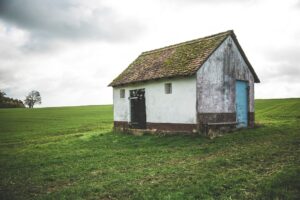Preserving the Past: A Guide to Restoring Historic Architectural Features

Restoring historic architectural features
Restoring historic architectural features is a labor of love that allows homeowners to honor the past while breathing new life into their property. Whether you own a vintage home or wish to restore a historic building, these essential tips will help you embark on a successful journey of preservation and revival:
1. Research and Documentation:
Begin by researching the history and original architectural features of the property. Gather photographs, blueprints, and historical documents to guide your restoration efforts.
2. Respect Original Materials:
Whenever possible, retain and restore the original materials, such as wood, brick, or stone, to preserve the authentic character of the structure.
3. Hire Restoration Experts:
Enlist the expertise of skilled restoration professionals experienced in preserving historic architecture. Their knowledge and craftsmanship are invaluable assets.
4. Address Structural Integrity First:
Prioritize addressing any structural issues to ensure the building’s stability and safety before delving into cosmetic restorations.
5. Restore Windows and Doors:
Repair or replicate original windows and doors to maintain the historical charm while enhancing energy efficiency with modern materials if necessary.
6. Preserve Ornamental Details:
Pay close attention to decorative elements like moldings, cornices, and rosettes. Repair or reproduce intricate details to revive the building’s original splendor.
7. Restore Historic Facades:
Refurbish facades to their former glory, taking care to match historical colors and finishes for an authentic appearance.
8. Uncover Hidden Gems:
During restoration, you may discover hidden architectural gems. Incorporate these discoveries into your design to celebrate the building’s unique history.
9. Repurpose Salvaged Materials:
Salvage and repurpose materials from non-original areas or demolished structures to maintain authenticity and reduce waste.
10. Document the Restoration Process:
Keep a detailed record of the restoration journey, including before and after photos, to preserve the building’s history for future generations.
11. Comply with Historic Preservation Guidelines:
Familiarize yourself with local historic preservation guidelines and regulations to ensure your restoration project adheres to all requirements.
12. Maintain a Long-Term Vision:
Plan for ongoing maintenance and preservation to protect the restored architectural features for years to come.
Restoring historic architectural features is a remarkable endeavor that connects us with the past and enriches the future. By embracing the unique character of historical buildings and employing careful restoration techniques, we can keep the legacy of these treasured structures alive for generations to come. Remember, with passion and dedication, you can restore a piece of history and create a lasting impact on your community and beyond.
RELATED SEARCH TERMS ABOUT RESTORING HISTORIC ARCHITECTURAL FEATURES:
- “Preserving the Past: A Comprehensive Guide to Restoring Historic Architectural Features”
- “Honoring History: Techniques for Reviving Historic Architectural Elements”
- “Restoration Chronicles: Preserving Heritage through Architectural Feature Renewal”
- “Reclaiming Beauty: How to Restore and Enhance Historic Architectural Details”
- “Uncovering the Past: Restoring Vintage Charm in Architectural Features”
- “Reviving Timeless Elegance: Techniques for Restoring Historic Architectural Elements”
- “Preservation Masterclass: Bringing Historic Architectural Features Back to Life”
- “Crafting History: A Step-by-Step Approach to Restoring Architectural Treasures”
- “Restoring the Glory: Celebrating Heritage through Architectural Feature Revival”
- “Building Legacies: Preserving Historic Architectural Features for Future Generations”

